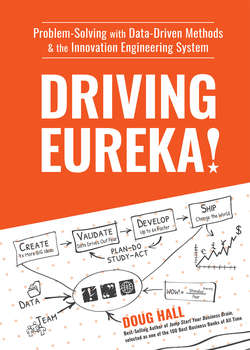Читать книгу Driving Eureka! - Doug Hall - Страница 40
На сайте Литреса книга снята с продажи.
Innovation Requires a Flip of Mindset
ОглавлениеIt is rare that anyone loves their existing innovation system. Despite what some may think, no one gets up in the morning and says, “I love to work in an inefficient bureaucracy.” Rather, they feel they have no choice because they don’t feel they can change the system. They follow the rules of the system because, frankly, they see that as less painful than trying to work outside the system.
What’s ironic is that while companies are addicted to cost cutting, there is probably no greater waste of time, energy, and money than inefficiencies within the existing systems regarding how new ideas/innovations are supposed to occur.
Upgrading an innovation system requires a flip of mindset. It requires an acceptance of the basic Deming premise that 94% of the challenges lie in the system, and 6% are the result of the worker.
Upgrading an innovation system might well be the greatest legacy of a leader. Retired CEO of Procter & Gamble A. G. Lafley, in his book The Game-Changer, puts the new mindset toward innovation this way:
My job at Procter & Gamble is focused on integrating innovation into everything we do.
Every business has some central organizing principle that people use as the basis for making decisions, meeting challenges, and creating opportunities. For P&G, it is innovation.
Innovation must be the central driving force for any business that wants to grow and succeed in both the short and long terms. We live in a time when the rate of changes is such that today’s unique product or service becomes tomorrow’s commodity. Winning—playing the game better than your competitors and changing the game when necessary—requires finding a new way to sustain organic revenue and profit growth and consistently improve margins.
This means seeing innovation not as something left to the R&D department, but as the central foundation in the way you run your business, driving key decisions, be they choice of goals, strategy, organization structure, resource allocation, commitment to budgets, or development of leadership.
All too often, managers decide on a business strategy—what markets to pursue and what products to make—then turn to innovation to support it. This is the wrong way around. Innovation needs to be put at the center of the business in order to choose the right goals and business strategy and make how-to-win choices. It is the central job of every leader—business unit managers, functional leaders, and the CEO. The CEO, in fact, must also be the CIO—the chief innovation officer.
Innovation is the foundation for controlling your destiny. It was for P&G (in my experience) the real game-changer—the real source of sustainable competitive advantage and the most reliable engine of sustainable growth. Innovation is the answer.
